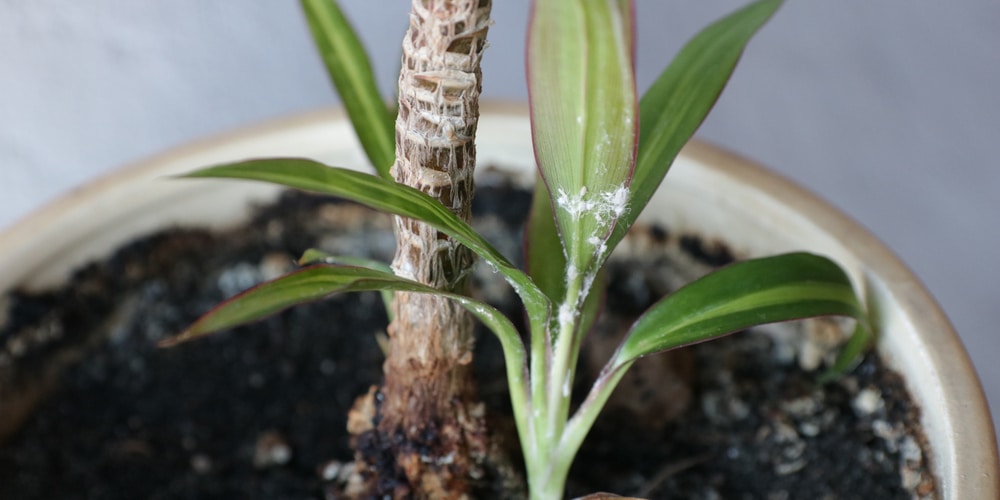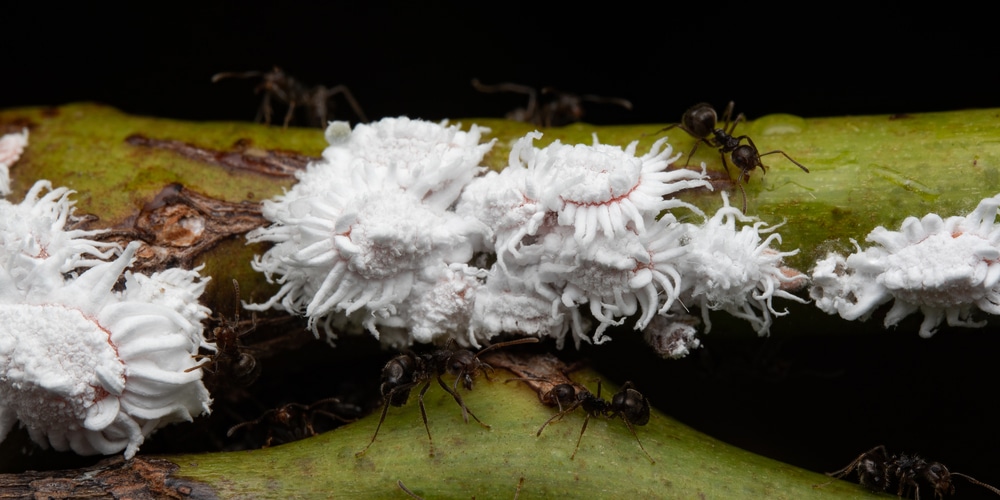The mealybug is a garden pest that can infest soil and foliage. They are often found in high humidity and moist soils like greenhouses, nurseries, and gardens. Mealybugs feed on the sap of plants which can cause leaves to wither or turn yellow; they may also feed on roots causing wilting or stunted growth. Let’s look at how to identify and get rid of this garden pest.
Can Mealybugs live in soil?
Mealybugs are part of the Pseudococcidae family. They thrive in warm, humid areas and live underneath plant foliage. Some varieties of mealybugs also live in the soil and eat the plant’s roots.
Mealybugs are tiny insects that measure approximately 1/20 to ⅕ of an inch in size. They have light-colored bodies that can sometimes appear pink. They also have a waxy shell and white cottony tendrils that create a fuzzy appearance. Young mealybugs are tiny and wormlike.
Mealybugs are capable of living in soil as well as plants. They eat the fluid from inside plant tissues, making them incredibly destructive to hibiscus and citrus trees. Once these pests infest a plant, it becomes difficult to eliminate them.
How to identify a Mealybug infestation:
Mealybugs can be identified by the white, cottony substance they produce from their bodies which is referred to as “wool.” Some species of mealybugs may have wings or long antennae that stick out from their bodies. The male of the species can fly, which allows mealybugs to move around and reproduce. They are white bugs that live in the soil.
Mealybug infestations on soil:
Infestations of mealybugs in the soil can be harder to spot than those within plants. Look for white wisps around the edge of plant pots or topsoil and also check for bugs crawling around the potting mix.
You can remove the plant from its pot to see if any insects are present. It’s essential to treat your plants as soon as possible as an infestation of mealybugs can end up killing a plant.
Mealybugs can infest the soil in your yard, as well as in houseplants. It can be harder to get rid of mealybugs from outdoor soil. Mealybugs can lay up to 600 eggs in the ground, along the roots of plants. When the insects hatch, they will eat the plant’s roots, preventing your plant from getting enough water to thrive.
How to get rid of Mealybugs in soil:
Identify the pests
Before getting rid of mealybugs in the soil, it is essential to identify if they are actually living there. Look for wilting leaves, yellowing foliage, fewer blooms, and fruit falling off plants. These can all be symptoms of a mealybug infestation on plants.
Clear up organic matter
It’s important to clean up the area where you suspect mealybugs may be hiding in soil or mulch by removing any organic matter that could harbor insects. Do a thorough sweep of the area with a broom and dustpan. If that fails, try placing a black tarp over the area and let it sit for about a month. Any bugs stuck under the tarps will eventually die.
Use rubbing alcohol
To remove mealybugs, try using a fine misted spray bottle of rubbing alcohol. Make sure the soil is moist and mist it with alcohol to kill the bugs hiding there.
How to get rid of mealybugs from houseplant soil
Mealybugs can also be removed by hand; this method works best if you remove the plants from their pots. Separate the soil from the roots to expose any hiding bugs. Throw the infected dirt away and use your fingers or tweezers to pull mealybugs off plant roots or shake them into a bucket of soapy water.
For large infestations of mealybugs, you can try using an insecticide; only use the ones that are safe for flowers or vegetables. Make sure to read the label first and thoroughly before applying any sort of chemical to your plants.
Another tip is to leave your plant in a cold place or let the soil dry out completely. Mealybugs like warm, moist places and will die if they get too cold or if the plant’s soil dries out.
Conclusion
By following these steps, you can get rid of mealybugs in the soil, preventing further infestation. It’s also worth thoroughly checking the plant’s foliage to see that they are not hiding underneath leaves. Infected plants can be treated with an insecticidal spray or neem oil.
Related: How to Get Rid of Soil Mites

